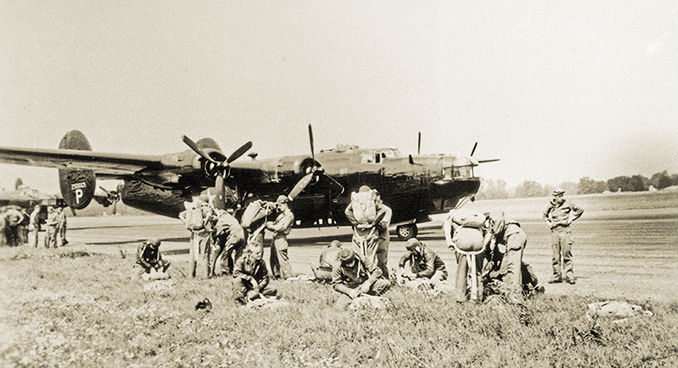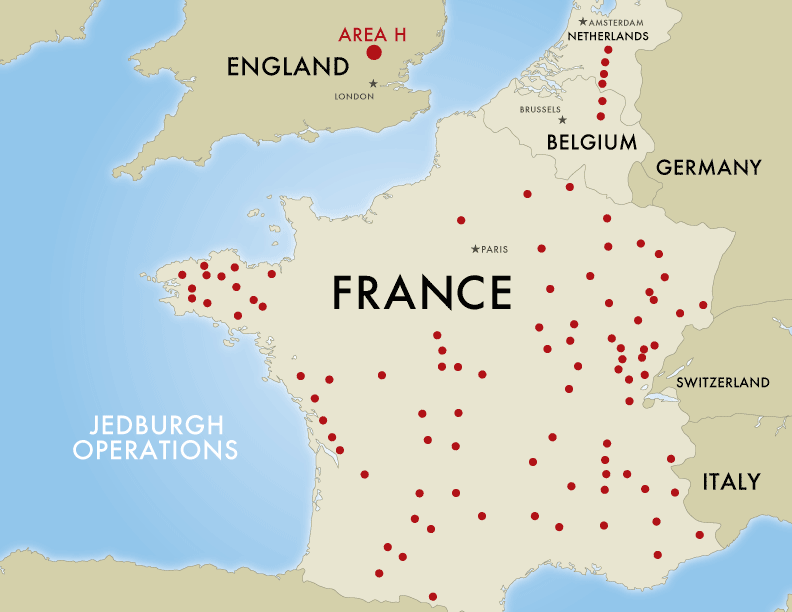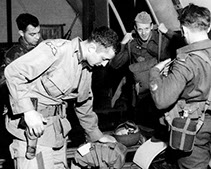The mission of the Jedburgh teams was to supplement existing SO/SOE ‘circuits,’ to help organize and arm the resistance, arrange supply drops, procure intelligence, provide liaison between the Allies and the Resistance, and to take part in sabotage operations. Project Jedburgh was a joint Allied program, with the OSS Special Operations (SO) branch, the British Special Operations Executive (SOE), and the French Bureau Central de Renseignements et d’Action (BCRA) involved. Eighty three American, 90 British, 103 French, 5 Belgian, and 5 Dutch personnel were extensively trained in paramilitary techniques for Jedburgh missions. Ninety-three Jedburgh teams parachuted into France and eight went into The Netherlands. A model team consisted of one French, one British, and one American serviceman. Every team had at least one officer and a radioman, but team sizes varied from two to four men.
So as not to alert the Germans to the exact invasion date, Supreme Commander, Allied Forces Europe, General Dwight D. Eisenhower, did not permit Jedburgh teams to parachute into occupied-France until the night of 5/6 June 1944. For the next three months thereafter, Jedburgh teams supported attacks on enemy lines of communication and reduced the destruction of key infrastructure by the retreating Germans. Their actions, like those of the OSS Operational Groups (OG), forced the Germans to divert significant military assets away from major battlefronts. As Allied forces overran the Jedburgh areas of operations, their missions were terminated.
Like many OSS veterans, several former Jedburghs had successful post-war careers. William E. Colby, who also commanded the Norwegian OG, served as the CIA Director from 1973-1975. Major General John K. Singlaub led the Studies and Observation Group (SOG) in Vietnam from 1966-1968. The Jedburgh with the closest connection to Army Special Forces was Colonel Aaron Bank, first Director of Special Forces (SF) and Commander of the first operational SF group, the 10th SFG. Many of the tactics and techniques used by Jedburgh teams were adopted for training early Special Forces in the 1950s.




